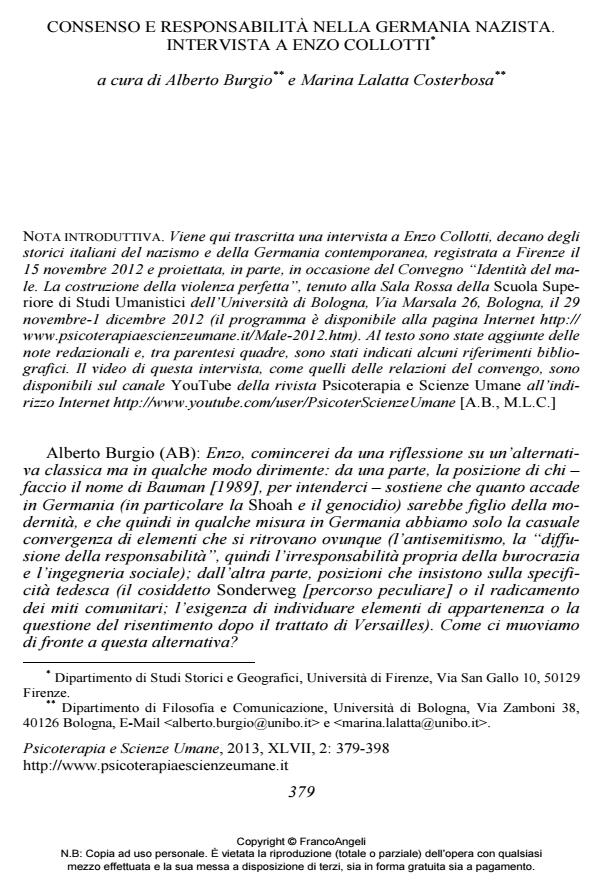Consent and responsibility in Nazi Germany. An interview to Enzo Collotti
Journal title PSICOTERAPIA E SCIENZE UMANE
Author/s Alberto Burgio, Costerbosa Marina Lalatta
Publishing Year 2013 Issue 2013/2
Language Italian Pages 20 P. 379-398 File size 1038 KB
DOI 10.3280/PU2013-002016
DOI is like a bar code for intellectual property: to have more infomation
click here
Below, you can see the article first page
If you want to buy this article in PDF format, you can do it, following the instructions to buy download credits

FrancoAngeli is member of Publishers International Linking Association, Inc (PILA), a not-for-profit association which run the CrossRef service enabling links to and from online scholarly content.
In this recent interview, Enzo Collotti, who is one of the major historians of Nazism, discusses some of the pivotal and still controversial issues of Nazism and of its incubation during the years of the Weimar Republic. The consent of large part of population, the presence of terror, the feeling of community, the ethical problem coupled with the issues of responsibility and law, and also anti-Semitism and anti-bolshevism that were rooted in Germany: these are only some of the themes at the center of the reflections of Collotti who restates the need of continuing to try to understand and explain what has happened in Germany and in Europe in the twelve years of National Socialist regime. In his conclusions, Collotti emphasizes the actuality of the themes at the center of the historiography of Nazi Germany.
Keywords: Consent, community, Weimar, Nazism, anti-Semitism
Alberto Burgio, Costerbosa Marina Lalatta, Consenso e responsabilità nella Germania nazista. Intervista a Enzo Collotti in "PSICOTERAPIA E SCIENZE UMANE" 2/2013, pp 379-398, DOI: 10.3280/PU2013-002016